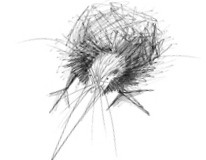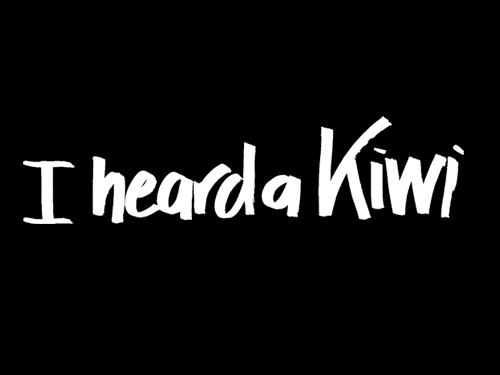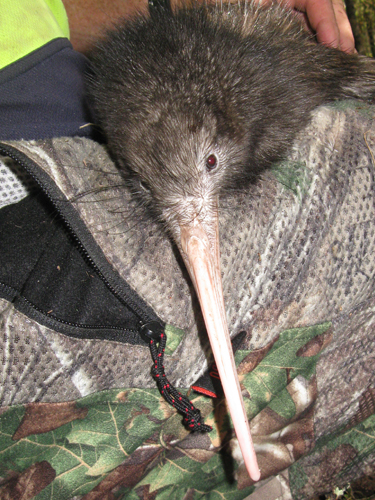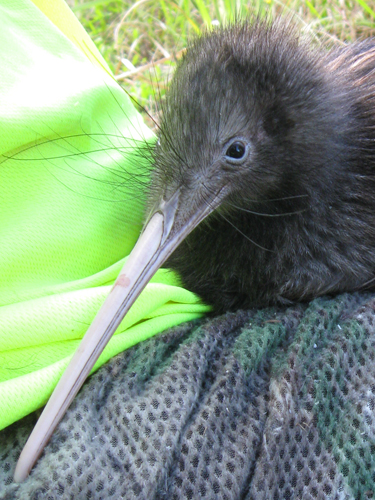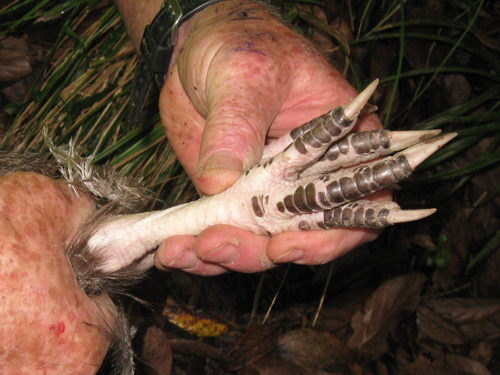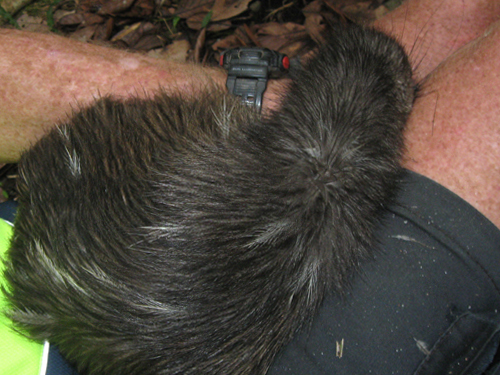22 April Report
WHLF AGM coming up
We are still working on a suitable date for the WHLF AGM – hoping to have it in person in the Hall if possible as it is always great for all the groups to get together and hear about the good work that is happening on the ground. Will let you know the date by the end of this week.
Kiwi Counting Season starts on May 19th
We are getting things in place for our annual kiwi count. Thanks in advance to those new folks that are helping out this year and thanks to the old hands too!!. Four of the keen Whangarei Predator Free team put up with me training them and have offered to cover some of the sites. Thanks. This monitoring work is a crucial check on the effectiveness of our stoat and dog control efforts.
The kiwi are fat and happy at the moment after a good wet autumn and are already calling hard – have a listen at your place on a quiet evening. listen to the female and male calls here on our website
Backyard Kiwi Predator Control Program:
Have replaced the traps lost in the multiple flash floods of the last few months. As expected for this time of year stoat catches are down and weasel catches up – thanks to those folks that ring in the stoat/weasel sightings – plenty of weasels seen at the moment.
With the winter months ahead I have changed over to eggs as the stoat lure, not as attractive as salted rabbit in the short term but they last longer this time of year.
April catches: Stoats 0, Weasels 4, Cats 2, Rats 63, Hedgehogs 8, Possums 2.
The Annual Kiwi Coast Pest Control Workshop is a Zui this year- Sunday May 29th
Follow this link to register:
https://kiwicoast.org.nz/…/northland-pest-control-zui…/…
Be part of the day or watch the presentations that interest you in your own time.
What your kiwi have been up to:
The ground based kiwi saver (1080) pulse at Manaia continues to show its worth with more chicks turning up in the area. Unfortunately one was found dead beside a driveway in Ody Road. It was 700g and too decomposed to DNA test for dog kill but did not have stoat kill injuries.
Whangarei Heads/Parua Bay Radio monitored kiwi:
- Chookie – Well settled in his nesting area of pines and natives at the SW end of Martins’ Owhiwa Road block. A big 12.5 hours nightly activity so he should be feeding up ready for breeding.
- Malaika– In pampas, in the young pine block, 200m from Chookie on Martins’ block Owhiwa road and hopefully she gets much closer for breeding. Her activity is averaging 11 hours with the odd lower night.
- Valentine – After giving me the run around for the last month or so I haven’t even managed to get a signal from her transmitter this month. I will keep searching wider- she could be anywhere in the wider Parua Bay area.
- Ross – He has moved away from his buddy Pepi and is now up the top end of Pepi Road. He might find a girl there to breed with.
- Pepi– He has remained in a similar area to where he and Ross have been previously – the west side of Pepi road. I caught up with him in the pampas for his 6 monthly band change and check. He was a healthy 2000g (down from his fat 2300g back in November). His bill was 104mm long – the same as back in November when I first found him. This means that he is definitely an adult male as suspected! His being with another male previously is rare behaviour for kiwi. It will be interesting to see if he goes on to find a female mate.
- Teina – He is in dense pampas at the northern end of the Martins’ block Owhiwa Road. His transmitter change is due but he is proving elusive in his pampas warrens. 11.5 hours nightly average.
- Beach Girl – In native bush just north of Martins’ block. 11.5 hours nightly activity. She is not that far from Teina.
- Wally – Wally is down by the Pataua estuary edge at the end of Campbell Road and has a nightly activity of 11.5 hours. I caught up with him for his transmitter change, he was in good condition and 2100g
- Pakipaki – After returning to the Horse Paddock last month she has once again headed back to the pampas below the Manaia Club. A pair has been heard calling there. Her nightly activity is 10.5 hours.
Rarewarewa/Purua
These are the dads that we get chicks from to transfer to Matakohe/Limestone Island and grow up for the public kiwi releases to add to kiwi populations and engage locals with their kiwi. The gift of these chicks from Ngati Hine and the landowners is a cornerstone of our kiwi recovery work for which we are extremely grateful!!
- Nick– In his usual area in Lovells’ Bush. 10 hours of nightly activity.
- Sancho – His 20/4/22 data stream had him still nesting at 184 days and his activity was still only showing 3.5 hours average but something has gone wrong with his transmitter because he is definitely not settled in one place.
- Ngutu roa – Usual area SW reserve, 12 hours activity.
- Moondust– Usual area behind woolshed – 11.5 hours nightly activity.
- Gorgeous – Usual area Hawkins’ Hill in his pampas bush in the paddock. 11.5 hours activity. I did his transmitter change – he was a fat 2500g. He will lose this fat when he does his 3 monthly nesting stint.
- Nanakia– In the pine slash in the recently harvested pine block. Average activity is down to 9 hours with some lower nights so may be starting to nest.
Some of these dads have been contributing chicks for a few years now so we try to rotate new dads in every few years to keep good genetic diversity. To do this Lesley Baigent and her Kiwi finding dog Yagi spent two days in Purua recently. What a team! They found 11 kiwi, 3 had existing ID chips so were known birds while the 8 others were new to us.
We put transmitters on 3 adult males that are definitely of breeding age ; “Buddha” had been monitored by DoC as a chick in 2003 so is now 19 years old, prime breeding age. “Macio” was a young male that I followed back in 2006 before his transmitter failed so it was great to see him again. The 3rd was a new guy named “Mitch” by the landowners- the McGraths.
We also transmitted 2 younger kiwi that may be breeders in the future.
Of the 6 females found all but 1 were new to us and now have ID chips; “Danny” (named by McGraths) was tucked up with Buddha which bodes well for breeding.
A very striking looking adult female had been previously found by a trained kiwi dog back in 2004 and was ID chipped. She has spectacular white legs and is speckled with white feathers (the pictures above don’t do her justice). She and some of the other kiwi are being named by Ngati Hine.
The good numbers of adult kiwi found in the Purua area are a very good indicator of the good dog control there by the locals. The new kiwi found are a result of DoC’s long term stoat control there and in particular the controlled ground based 1080 pulses – this is where the study was done that showed the risk of ongoing trapping without regular secondary toxin pulses. What was shown in that study has now been applied to many successful kiwi recovery areas and a key to the increasing kiwi numbers in those areas of Northland.
Watch out for the AGM date email
Cheers Todd
Todd Hamilton
Backyard Kiwi Project Manager
Whangarei Heads Landcare Forum
M 021 1145 385












